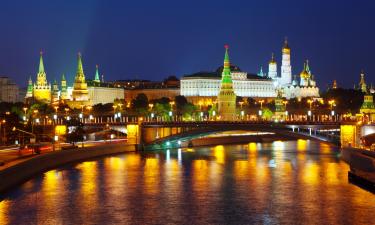Nine dead, 14 missing as tropical storm moves toward northern Japan
A powerful tropical storm churned northward in the sea between Japan and the Korean Peninsula on Wednesday, leaving landslides and flooded towns in its wake. At least seven people were killed and 16 others were missing, including two in South Korea, officials said.
The storm was headed toward Japan's northern island of Hokkaido, where up to 25 centimeters (10 inches) of rain was expected by early Thursday, the Meteorological Agency said.
Typhoon Nabi slammed into southern Japan on Tuesday, flooding towns and driving more than 300,000 people from their homes. About 1,500 soldiers were deployed to fortify coastal defenses and help in the rescue effort.
It lost strength Wednesday as it roiled over the Sea of Japan and was downgraded to a tropical storm. But it still was churning winds of up to 108 kilometers (67 miles) per hour, the agency said.
The storm killed at least seven people in Japan and injured 91, and at least 14 others were missing, a National Police Agency official said on condition of anonymity, citing agency rules.
Kyodo News agency reported its own toll of nine dead, including two women whose bodies were recovered early Wednesday after a landslide destroyed their homes, and 14 others missing.
Part of a major road collapsed in heavy rain in Yamaguchi prefecture early Wednesday, crushing nearby houses, prefectural official Yoshimasa Mima said. Three residents were missing, he said.
Heavy weather was hindering efforts to rescue people trapped under landslides, officials said.
More than 100,000 homes on the islands of Kyushu, Shikoku, and Honshu were still without electricity Wednesday morning, power companies said.
Ferry services were canceled between South Korea and the Japanese city of Fukuoka, and between the islands of Kyushu and Honshu, while train services in southern Japan were also disrupted by landslides, public broadcaster NHK said.
Japan Airlines and its affiliates canceled 47 flights Wednesday, while All Nippon Airlines grounded 43 flights. The cancellations affected almost 12,000 people, the two companies said.
Nabi, meaning butterfly in the Korean language, also caused damage in South Korea, dumping up to 35 centimeters (14 inches) of rain in southern and eastern parts of the country from Monday through Wednesday morning.
One person was missing after being swept away by a swollen stream in Ulsan, about 410 kilometers (255 miles) southeast of Seoul, on Tuesday. Another was missing after his car slipped off a rain-slickened road in Gyeongju, about 370 kilometers (230 miles) southeast of Seoul, South Korea's Yonhap news agency said.
About 2,330 police and firefighters were carrying out recovery work in Ulsan, one of the hardest-hit cities, it said.
High waves caused a 5,470-ton Vietnamese cargo ship, Long Xuyen, to run aground near the southeastern port city of Pohang, Yonhap said. Its 22 crew members were safe, it said.
Last year, a record 10 typhoons and tropical storms struck Japan, leaving nearly 220 people dead or missing _ the largest casualty toll since 1983. South Korea is typically hit by one or two storms a year.
Typhoon Tokage, which hit Japan in October, was the country's deadliest storm in more than a decade, killing 83 people.
Scientists partially blamed last year's intense storm season on warmer-than-average ocean temperatures, AP reported.
Subscribe to Pravda.Ru Telegram channel, Facebook, RSS!





